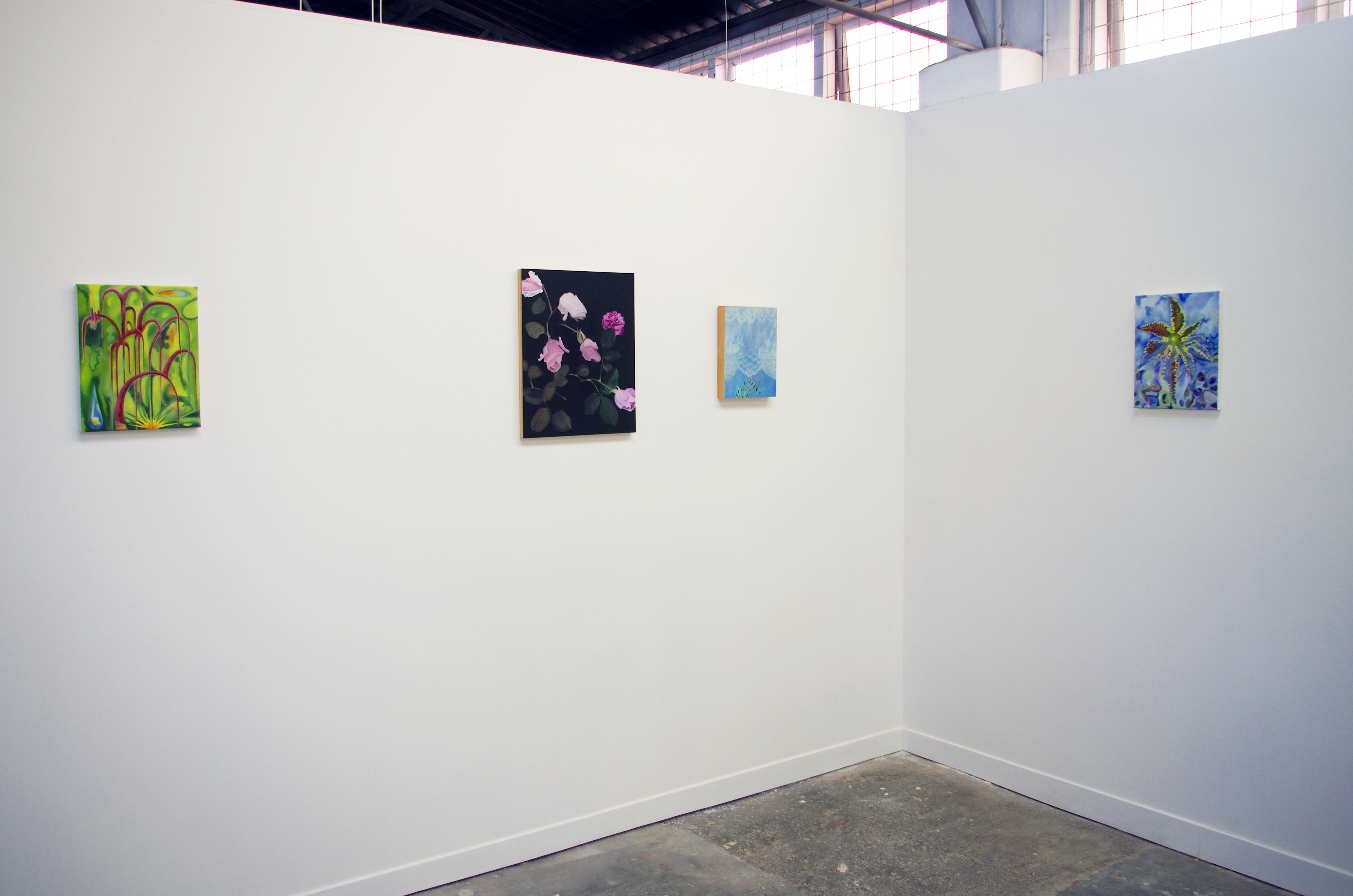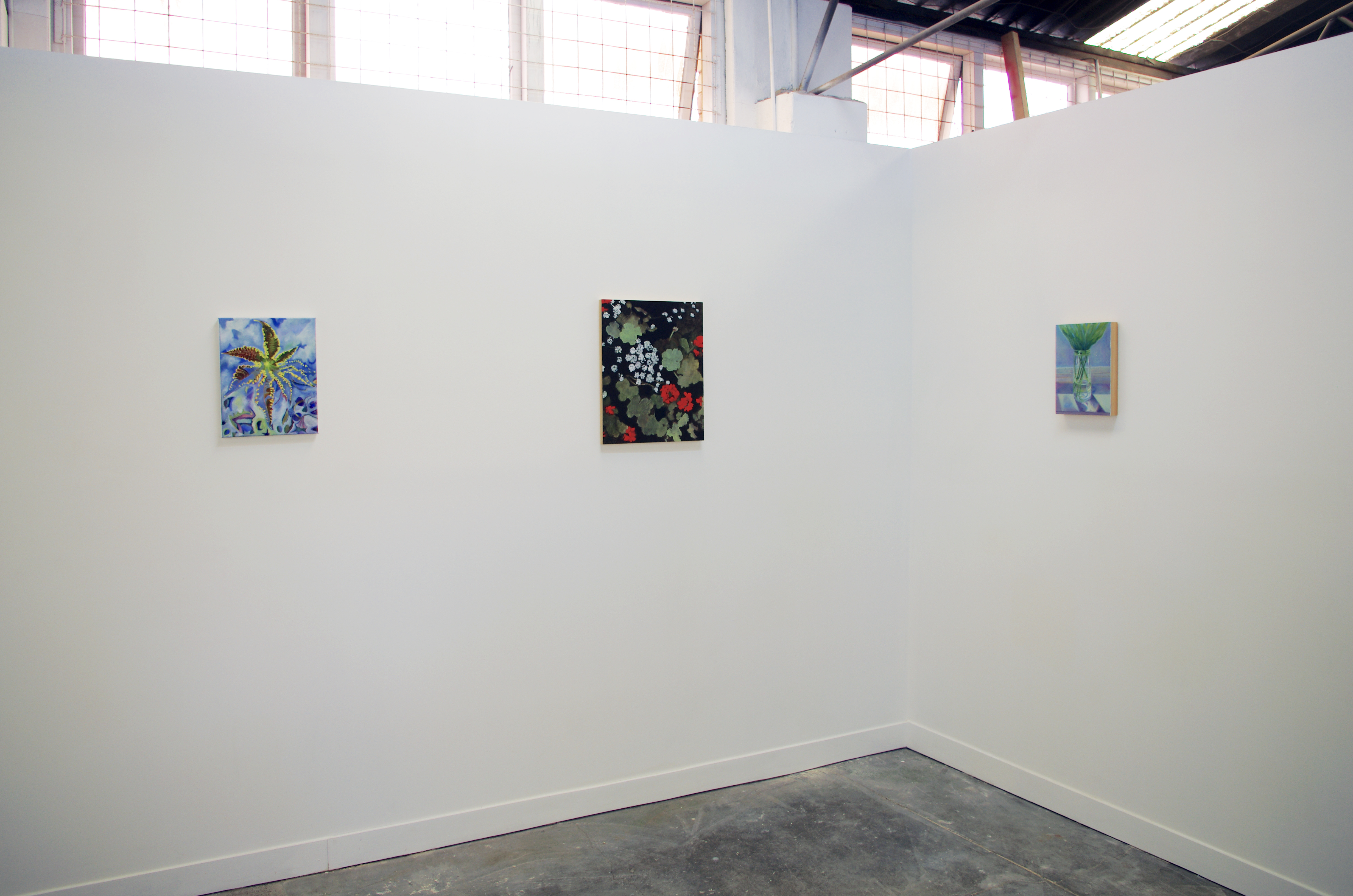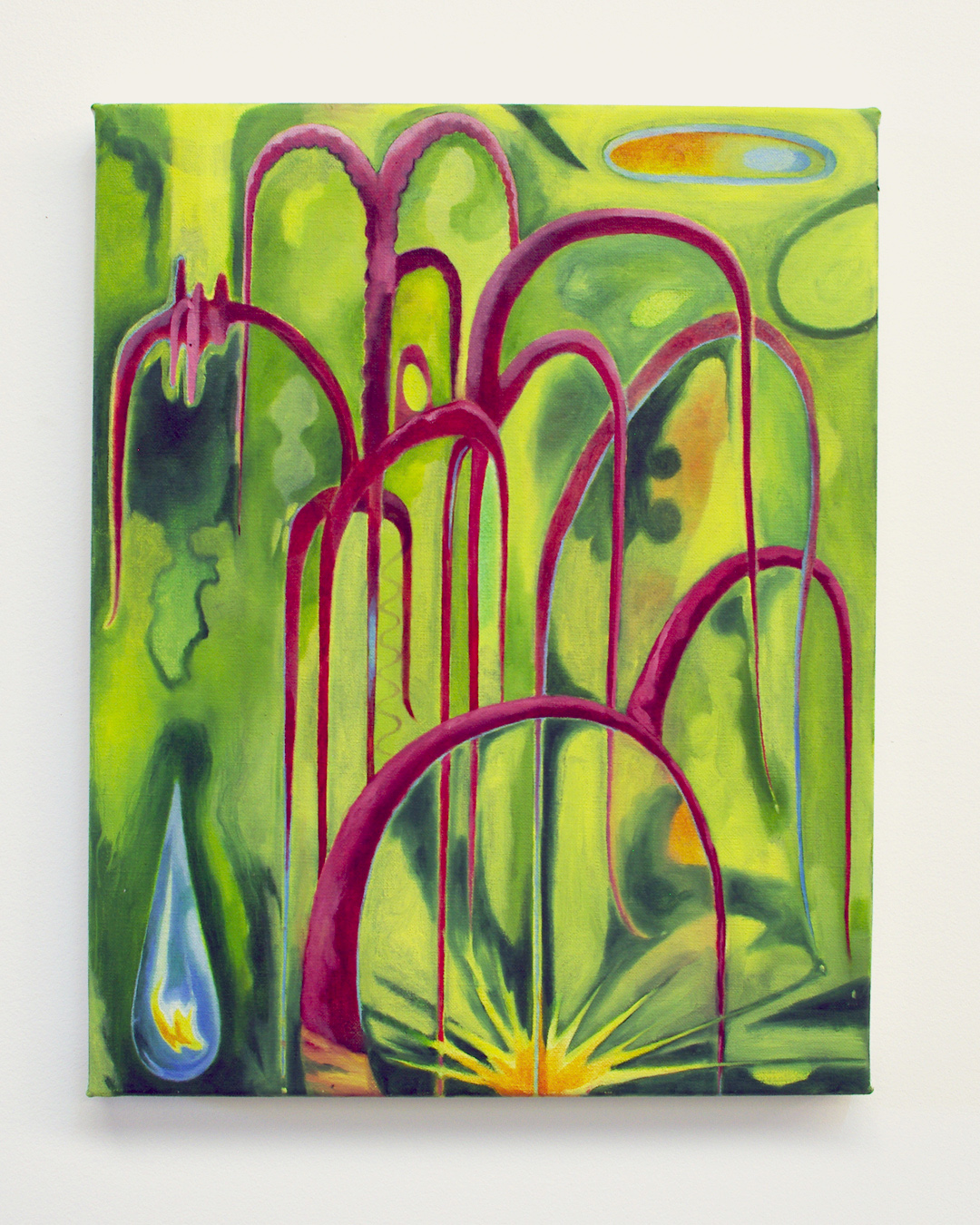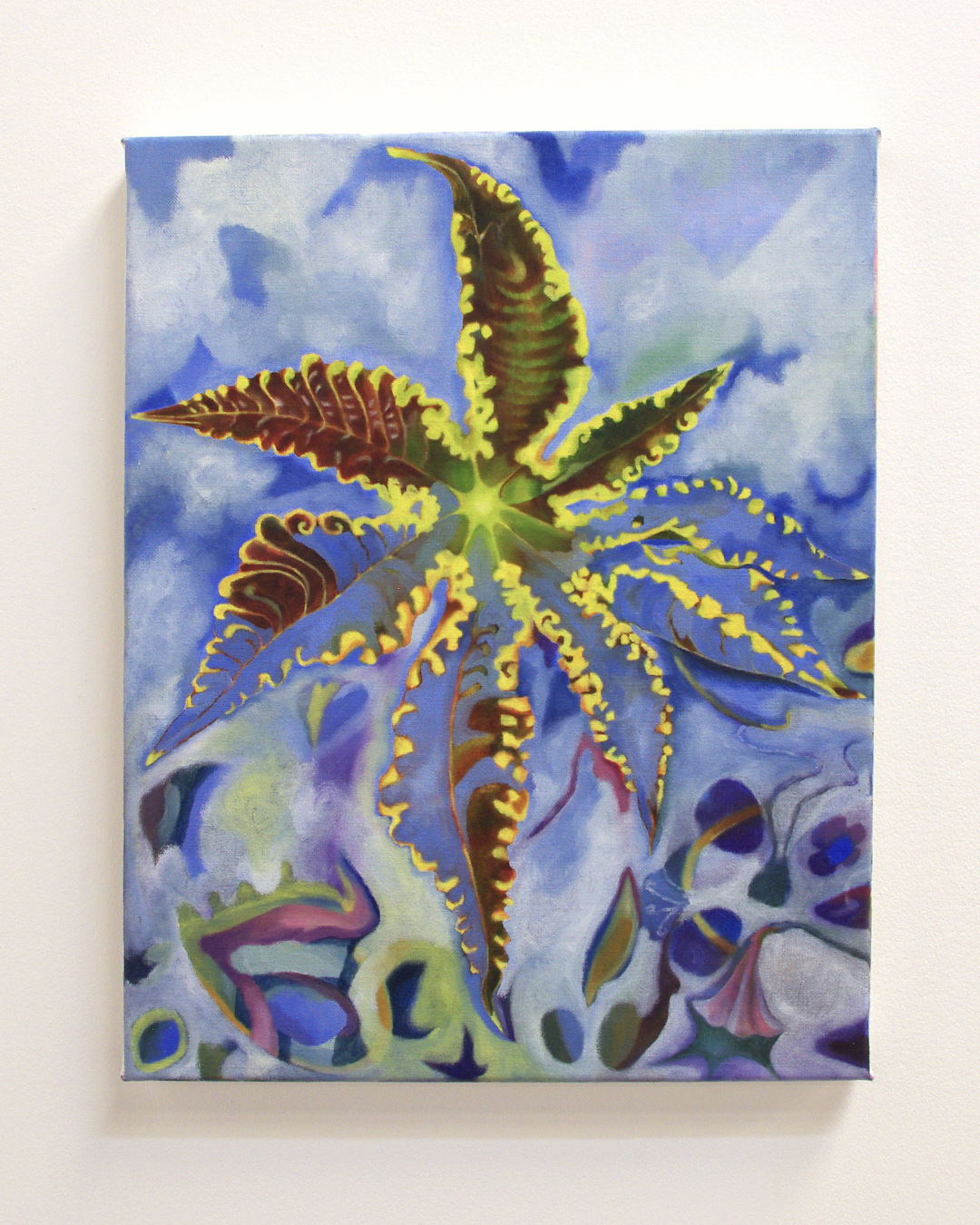



Nod Space, Boorloo/Perth
2022
Fiona Harman, Luisa Hansal, Isabella Speed, Tamara Marrington
Curated by Fiona Harman
Rose is a rose is a rose is rose
The line appears deep in the 1913 poem by Gertrude Stein, Sacred Emily. It has been plucked from 367 short sharp lines to stand on its own and it has become legion, mutating into smart variations. A lie is a lie is a lie, a crime is a crime is a crime. Stein used it too, in other work, again and again. The flower and the line, blunted with repetition to an easy shorthand for - things being what they are - the dispensing of symbolism. The end of flowery language.
…Color mahogany.
Color mahogany center.
Rose is a rose is a rose is a rose.
Loveliness extreme…
🌻
Search terms: world before flowers. Flowers appeared around 130 million years ago. The Cretaceous Period. People also ask: what did the first flower look like? Like a magnolia, apparently. People also ask: what came before flowers. Studies suggest butterflies and moths. Not bright yet; brown. Did the flying insects or the flowers seize the advantage of colour first? Jury’s out on who seduced who. Search terms: When humans. Between five to seven million years ago. The Pliocene, the Pleistocene, the Holocene, the Anthropocene. Flowers are older than we are by 120 million years.
And all the things we have done with flowers since.
🌻
For Ancient Egyptians, the lotus was the sun. For Emily Dickenson, To be a Flower, is profound
Responsibility — , For Botticelli and many others, flowers meant spring, new life. Here, white flowers signal that Makuru has arrived, yellow flowers mean Kambarang. Oscar Wilde is said to have worn a green carnation. Narcissus became a flower of the same name gazing too long in a lake. Margaret Preston painted a tight wad of ‘Western Australian Eucalypt’ against a white modernist screen on a quest to find a uniquely ‘Aboriginal’ form of art (her words). Hans Heysen painted a series of fluffy roses in a basket and Norman Lindsay lamented their ‘useless beauty’, suggesting either another, more useful, form of beauty or that beauty itself is useless. Both are ideas worth contesting. Ask the bees what they think about flowers.
Georgia O’Keefe, in 1939: “You hung all your own associations with flowers on my flower and you write about my flower as if I think and see what you think and see of the flower—and I don’t.”
🌻
To make an image of a flower you need a closed scalloping loop of five petals or more (not less) with an any-sized circle in the middle, and also years of training. You need the skill and patience to build layered colour and subtle gradients over hours and hours to capture something that might be gone in the morning. You need to seek transcendence. After moving water, the gossamer layering and intricate detail of the flower might be the most technically challenging surface to reproduce in paint. This is not least because they live so deep in the subconscious and so often in the daily eye-line that they come sheathed in information and assumption and are thus difficult to apprehend, in the moment, with clarity.
You need the conviction and the stamina to keep saying, to those assumptions: this is very serious; it is life and death
To capture a flower you need to live inside the idea: memento mori.
🌻
Is it worth saying, yet again, that women artists in the European 19th century were not taught life drawing for ‘reasons of morality’, which barred them from success in the more ‘prestigious’ genres of painting, thus creating a faux-essentialist feedback loop in which the ‘lesser’ genres – including still life and flower painting – became coded as feminine? Is it worth once again holding the judgements in the term ’domestically scaled’ up to the light? What if we said instead: intimate? Always this mental wrestle, writing, faced with any group of artists all coded as female working in a genre coded as feminine; must I say it? What if I just don’t say it? Someone else will if I don’t. Or, what if it’s marginalia worth claiming? What if that’s where the power is?
It is a trap, set long ago. Over and over I am doomed to build the pillar of salt just to tell you – don’t look.
🌻
As always, things taken out of context obscure the complexity of the whole. It is not, as often quoted, a rose is a rose, but Rose is a rose… It begins with a proper noun. Rose, the name, appears capitalized elsewhere in the poem, alongside the masculine Jack, like in Titanic. One thing is in fact not exactly like what follows. Rose, the women, is a rose, the flower, is a rose is a rose is a –
Stein had studied associative psychology and tested often in her writing what occurs in repetition and juxtaposition - the change and dissolution of meaningrather than the reinforcement of it.
Of course the word for a flower would perform this sleight of hand trick: as long as we are human, things being what they are, flowers will always be something else.
Notes and other reading
This text is much looser collection of ideas explored in an essay written in 2018 for the Cruthers Collection of Women’s Art exhibition FLORA at Lawrence Wilson Art Gallery, which is available to read online here: https://www.lwgallery.uwa.edu.au/exhibitions/past/2018-exhibitions-archive/flora
That essay drew heavily from Dr Ann Elias’s 2015 book, Useless Beauty: Flowers in Australian Art, published by Cambridge Scholars Publishing, which makes a compelling argument for an alternative history of Australian art told through floral imagery.
The title of this exhibition – and the Georgia O’Keefe line quoted here - is borrowed from Jessi Jezewska Stevens’ Flowers are the Ultimate Symbols, published in the New York Times in 2021, available to read online here: https://www.newyorker.com/culture/culture-desk/flowers-are-the-ultimate-symbols
This text has been written without seeing the paintings in The Ultimate Symbol off screen, and thus - as the lament against thinking without looking would otherwise be ironic - is part one of two. Part two will be written after the exhibition opening, and will address the artists’ works directly.
Text by Gemma Weston